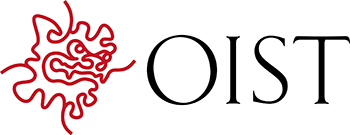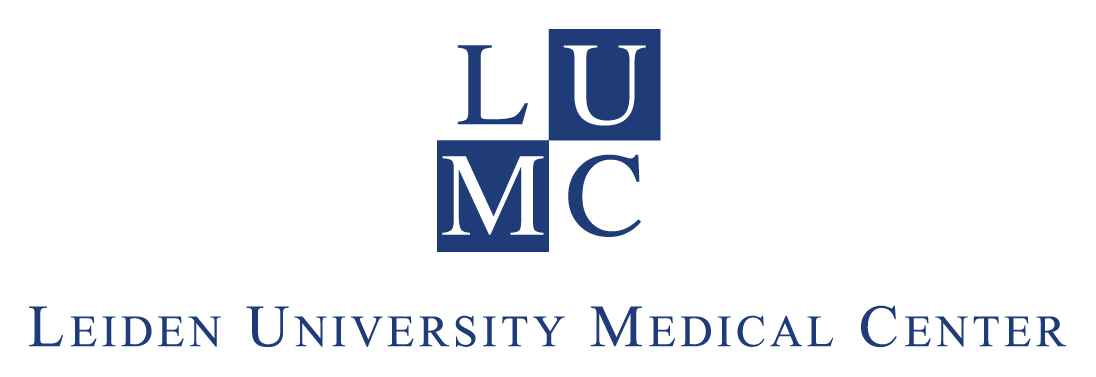Overview
- Mightex’s market-leading optogenetic systems enable researchers to target and activate photoreversible optosystems composed of light-sensitive proteins or protein domains that respond to specific wavelengths of light. These are implemented for spatiotemporal control of multiple cell behaviours, including migration, division, cell signaling, and others.

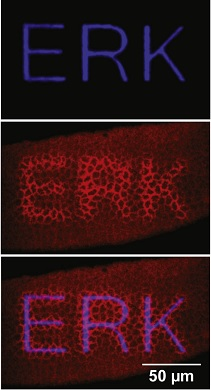
Key System Requirements
- Quick and easily integratable with existing experimental and microscope setups
- Ability for widefield and/or targeted stimulation of cellular and/or subcellular features
- Ability to stimulate multiple ROIs at physiologically relevant speeds
- Ability to stimulate multiple optosystems, potentially simultaneously (multi-color)
- Broad wavelength spectrum
- Ability to stimulate photoreversible constructs with different wavelengths
- Easy software control to adjust light intensity and frequency, including the ability to produce gradients
- Closed-Loop/Real-time stimulation
Polygon DMD Pattern Illuminator
Mightex offers a wide selection of optogenetics solutions ranging from basic LED light sources to full optogenetics modules including our market-leading Polygon DMD device for patterned stimulation, which has been adopted by over 650 research labs worldwide and led to over 100 scientific papers. Please contact our applications specialists to discuss your needs and find out how Mightex can help you with your next scientific breakthrough.
For more details, please click “Patterned Illumination for Optogenetics in Cell Biology” here➡️
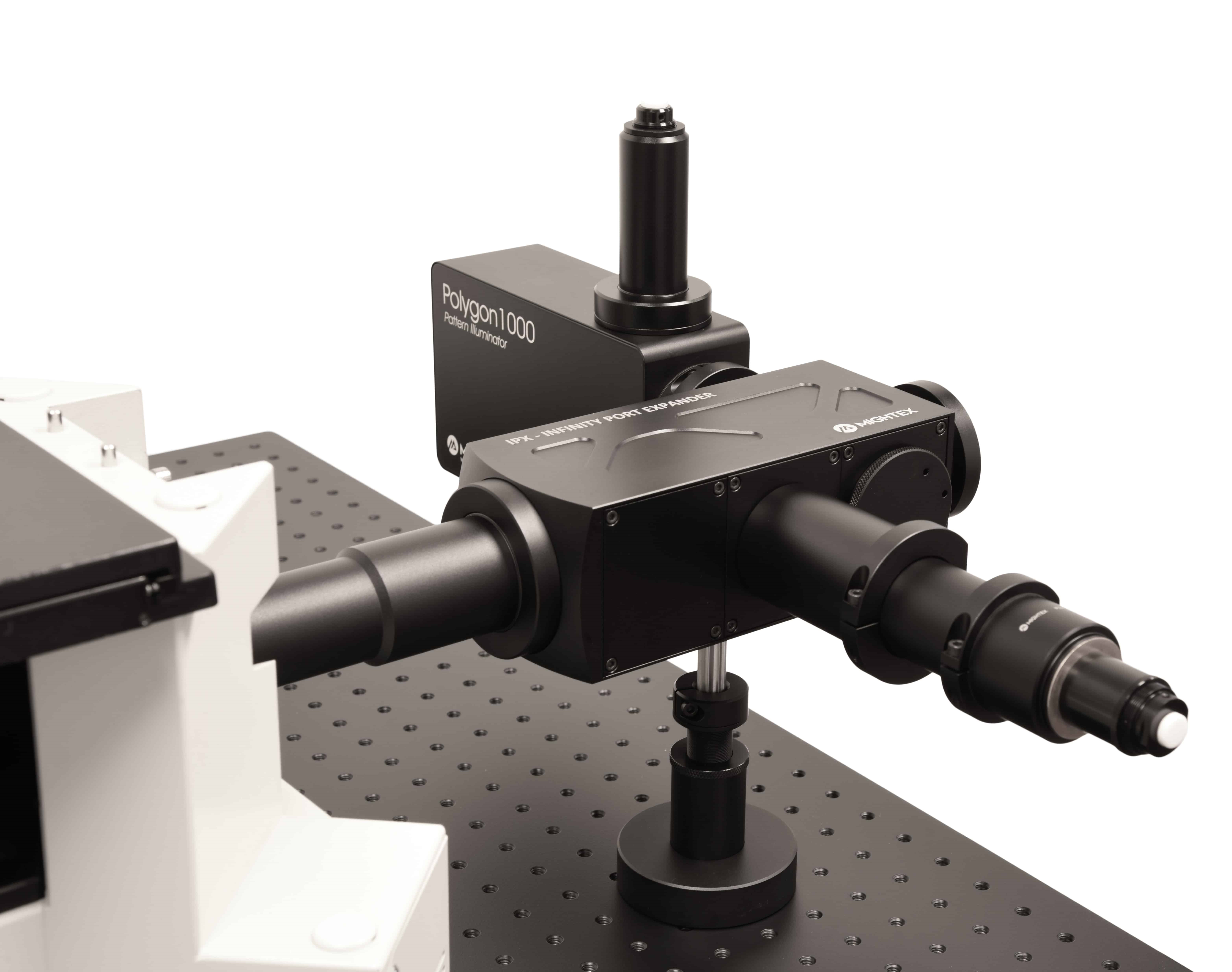
Customer Successes and Publications
The study introduces a novel approach using light-inducible Cre recombinase to dynamically activate antibiotic resistance genes in E. coli. By demonstrating light-activated resistance to various antibiotics, the researchers showcase the potential for spatiotemporal control of cell survival, offering a valuable tool for synthetic biology and microbiology applications that require dynamic regulation of susceptibility and survival. Mightex’s Polygon DMD device was used for the illumination of specific areas within the field of view and saw preferential activation of cells in the illuminated areas. Using the Polygon, they look forward to controlling subpopulations of cells in future applications.
Michael B. Sheets & Prof. Mary J. Dunlop
Boston University, Boston, MA, USA


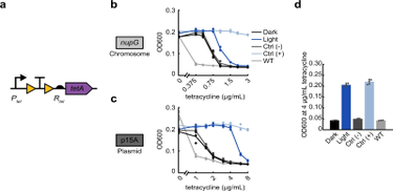
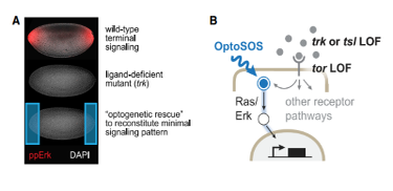
Researchers demonstrate the ability to manipulate Drosophila embryos by combining optogenetic control of Ras/extracellular signal-related kinase (ERK) signaling with the genetic loss of receptor tyrosine-kinase-driven terminal signaling patterning. Using Mightex’s Polygon DMD device to spatially illuminate the anterior and posterior poles of the embryo, they successfully rescue normal development, generating viable larvae and fertile adults from an otherwise lethal mutant, providing insights into the spatiotemporal requirements and signaling thresholds for specific developmental programs.


Heath E. Johnson & Prof. Jared E. Toettcher
Princeton University, Princeton, USA
Telomeres, critical for protecting chromosome ends, form liquid condensates driven by shelterin components TRF1 and TRF2. These condensates, preventing coalescence, selectively recruit telomere-associated factors, regulating access to DNA damage repair factors and contributing to a dynamic yet persistent end-protection mechanism.
Using an optogenetic approach with Mightex’s Polygon DMD device by locally activating to bring two telomeres together, these researchers found that telomeres are capable of undergoing coalescence to form a single larger telomeric body.
Amanda Jack & Prof. Clifford P. Brangwynne
University of California, Berkeley, CA, USA


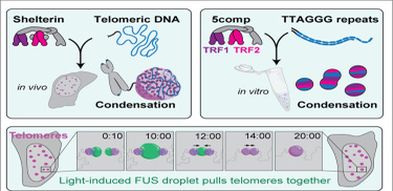
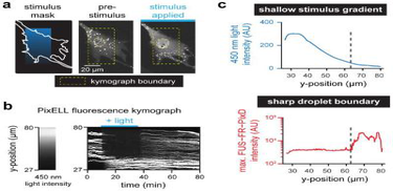

Protein Phase Separation Provides Long-Term Memory of Transient Spatial Stimuli (Cell Systems 2018).
Protein droplets exhibit robust spatial memory, maintaining the spatial pattern of an inhibitor long after its removal. Despite this persistence, droplets are dynamically exchanging monomers with the diffuse phase, and the study suggests that the persistent polarization seen in various biological processes might arise from a simple biophysical process without additional biochemical feedback loops. Using Mightex’s Polygon DMD device, researchers selectively applied blue light stimulation to subcellular regions of cells To test if the spatial distribution of light-dissociable clusters (PixELLs) could encode long-term memory of transient stimuli.


Elliot Dine & Prof. Jared E. Toettcher
National Institute of Neurological Disorders and Stroke,
Maryland, USA
A photo-inactivated EB1 variant (π-EB1) with a blue-light-sensitive protein-protein interaction module was developed to precisely control microtubule dynamics and +TIP complex disassembly. Using Mightex’s Polygon DMD pattern illuminator, localized π-EB1 photodissociation was achieved which enables subcellular control of microtubule dynamics and induces aversive turning in migrating cancer cells, highlighting its potential as an optical tool for regulating intracellular protein activities.
Jeffrey van Haren & Prof. Torsten Wittmann
Erasmus University Rotterdam, Rotterdam, Netherlands


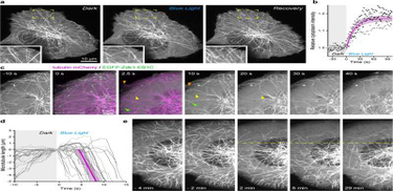
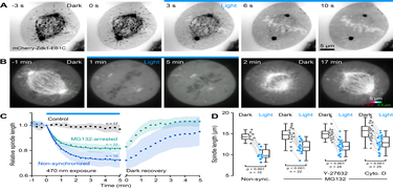
Mitotic spindle dynamics, essential for chromosome segregation, involve various microtubule populations with distinct functions. Using a light-sensitive EB1 variant (π-EB1) for local and reversible inactivation of +TIP association with growing microtubule ends, the study reveals that acute π-EB1 photoinactivation induces rapid metaphase spindle shortening and transient tension relaxation. Interestingly, it does not inhibit microtubule growth but increases astral microtubule length and number, uncovering mitotic functions of EB1 that were not apparent in genetic experiments. For spindle shortening and position experiments, ROIs were drawn using the PolyScan software and blue light was projected to these ROIs with Mightex’s Polygon DMD pattern illuminator.


Alessandro Dema & Prof. Torsten Wittmann
University of California-San Francisco, CA, USA












